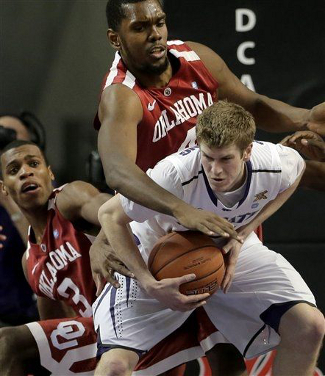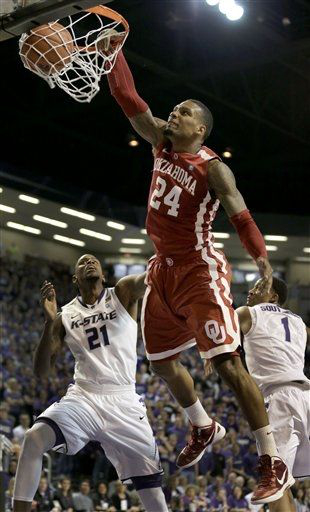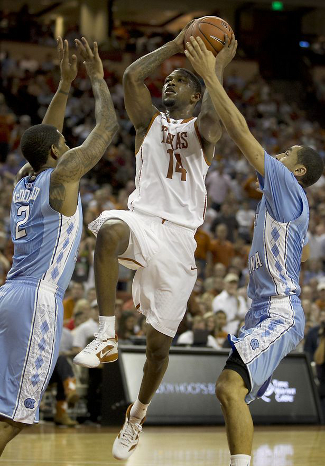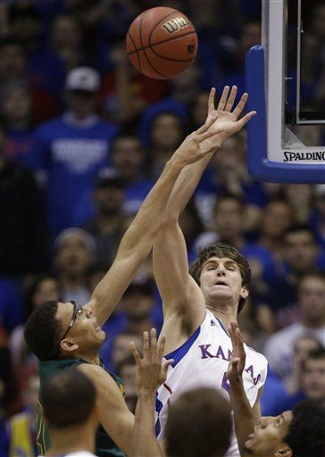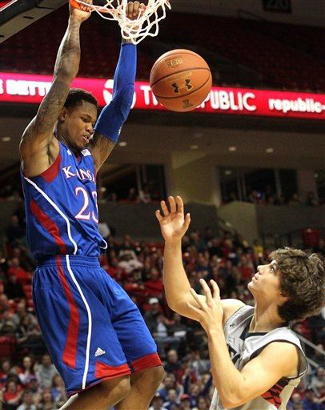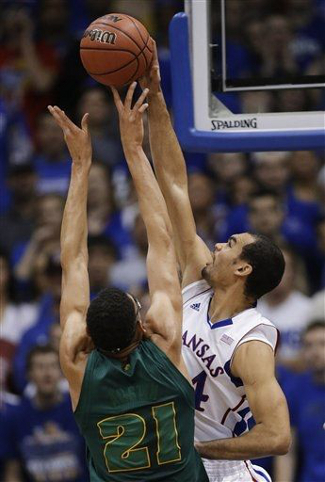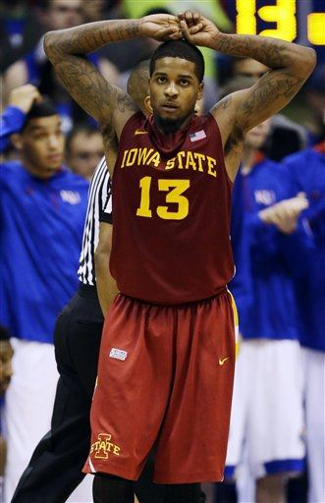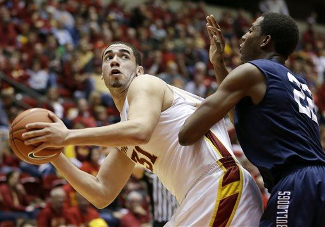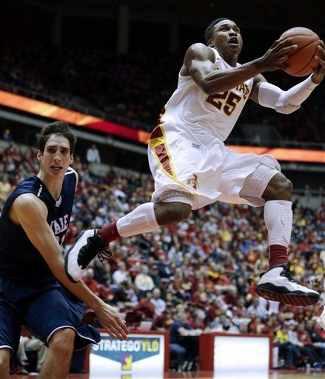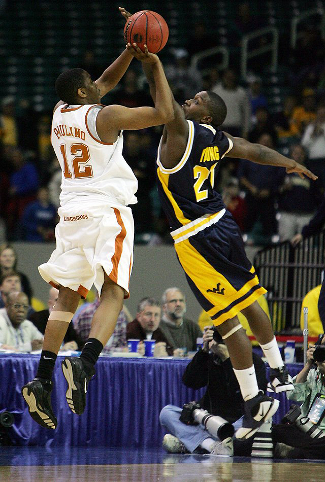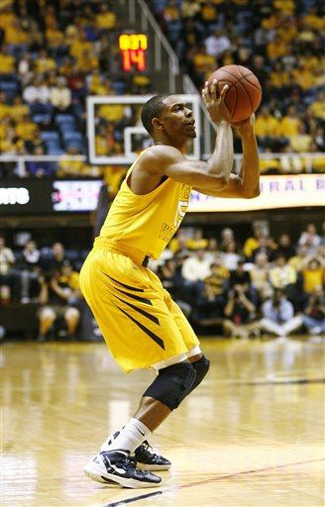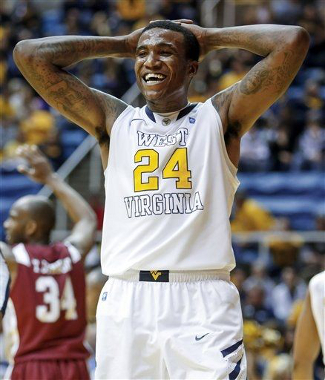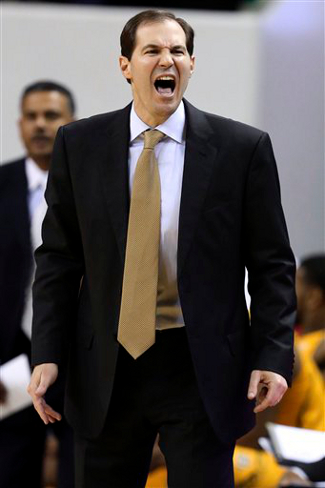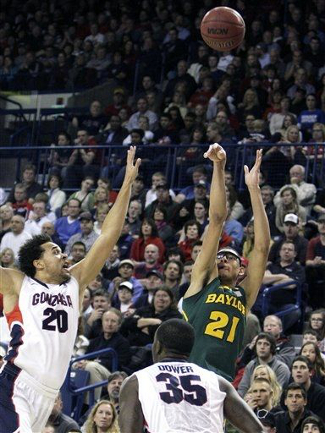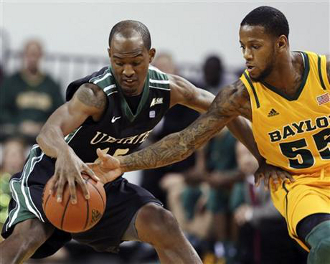Lloyd Noble Center | Norman, OK | Tip: 8:30 P.M. CT | TV: ESPN LRT Consecutive Game #238 It has been 15 years since the Texas Longhorns opened conference play with four losses, a depth which the program had never reached under Coach Rick Barnes before Saturday’s heartbreaking loss to Kansas. With little time to prepare for tonight’s road game against Oklahoma, the Horns will have to rebound quickly if they want to avoid making even more unfortunate history. Texas has not opened conference play with five straight losses since Leon Black was at the helm in 1975-76. There were some close calls in between, with both the 1982-83 and 1983-84 squads dropping four before stopping the bleeding in their fifth game. Those reprieves were temporary, however, as the 1983-84 team ended up losing nine of its first 10 Southwest Conference games and the 1982-83 team finished 1-15 in the league. The Longhorns showed a lot of promise in their upset bid against Kansas on Saturday, so there’s hope that they can avoid that 0-5 start tonight. Texas has now proven it has the talent to compete with anyone in the league, but these young Longhorns have to also prove that they have the moxie to actually close out their opponents.
Oklahoma’s stingy defense pesters opponents By the numbers Like most Lon Kruger teams, these Sooners play tough defense and value the basketball. Oklahoma is allowing opponents an adjusted efficiency mark of just 0.918 points per possession, while coughing it up on only 18.9% of their own possessions. While that turnover percentage is not nearly as miserly as that of Kruger’s UNLV teams, the Sooners definitely limit their mistakes on the offensive end. That ability to make possessions count is very important for a team that doesn’t actually shoot the ball very well. OU’s effective field goal percentage is only 47.2%, more than a full point below the national average. That number is dragged down by poor outside shooting, as the Sooners make only 32.2% of their three-point attempts. The other aspect of Oklahoma’s offense that makes up for their poor shooting is an ability to extend possessions with offensive rebounds. The Sooners are ranked 63rd in the country in OR%, grabbing 35.8% of their missed shots. Add in that solid work on the glass with the low number of turnovers, and OU is currently ranked 60th in the nation in adjusted offensive efficiency, scoring 1.072 points per possession. As for that tough defense, the Sooners lock down the perimeter and keep their opponents off the line. Oklahoma opponents have made only 30.4% of their three-point attempts this season, one of the fifty best defensive marks on the perimeter. OU also only gives away about three free throw attempts for every ten field goals, a defensive FTR that ranks in the Top 70. Although Texas has not proven it can take advantage at the line, it is unlikely that they will get many attempts at the charity stripe against this Sooner D. Meet the Sooners In the second year under Coach Kruger, the Oklahoma roster has quickly come together with a nice blend of youth and experience, giving the Sooners a very deep bench. Oklahoma returns all five starters from last year’s team, but the bench is so deep that three of them are now reserves. Senior guard Steven Pledger (No. 2) is one of the two returning starters who has held on to his role in the starting five. He has a deadly three-point shot and is mostly a catch-and-shoot guy who does not attack the rim that often. After a scorching 5-for-9 start behind the arc in the season opener against Louisiana-Monroe, Pledger has cooled off a bit, but is still sinking nearly 37% of his threes.
Romero Osby is Oklahoma’s leading scorer The other returning starter who is still in the starting five is forward Romero Osby (No. 24). The former Mississippi State Bulldog is tops on the team in both points and rebounds, scoring 13.6 per game to go with 6.4 boards. Osby is a very tough matchup because he has good handles, can move quickly, and has a nice midrange game. Although Oklahoma likes to isolate him on the block and use cross-screens to free him up for easy hoops, Osby loves to face up defenders near the free throw line and quickly drive to the rack. Fellow transfer forward Amath M’Baye (No. 22) also presents the same matchup problems. Although M’Baye cannot hit the three like Osby can, he also has a good midrange game and the ability to take other forwards off the bounce. The pair of forwards are also tenacious on the glass, with their individual rebounding percentages ranking in the top 500 nationally on both ends of the court. M’Baye snags more than 10% of his offensive rebounding opportunities, a huge reason why the Sooners are still successful on offense despite poor shooting numbers. In the backcourt, the Sooners are getting instant production from freshman Buddy Hield (No. 3), an exciting kid from the Bahamas. Although he’s not technically the team’s point guard, Hield leads the starters with two assists per game and rebounds incredibly well for a 6’3″ guard. He knows where the ball is likely to carom off a miss and manages to slip through the defense to steal boards from bigger players. Although he’s a great facilitator and board man, Hield is truly a scorer at heart. He has a nice outside shot, smooth midrange jumper, and is great at slashing to the rack. That ability to penetrate is key on a team that doesn’t log many assists. Hield’s drives force defenses to help and rotate, which often opens up the bigs underneath or Pledger behind the arc. At the point, freshman Je’lon Hornbeak (No. 5) is still adjusting to the college game. On a team that doesn’t turn it over often, Hornbeak is the one who makes the miscues that has coaches scratching their heads. He has a great ability to shift speeds and get into the heart of the defense, but his primary problem is that he frequently gets locked into his highest gear. Many of his turnovers are a result of playing too fast and out of control, so once he masters the art of slowing down and taking what the defense gives, his game will quickly elevate. When Hornbeak is playing off the ball, he is also a threat from outside. The freshman has made nearly 38% of his threes, including a perfect 2-for-2 performance in the team’s win over in-state rival Oklahoma State. With the freshman and Wyoming transfer M’Baye now in the starting lineup, Sam Grooms (No. 1) now comes off the bench, just a year after starting every single game. Even while dealing with a pair of bad ankles, Grooms is still the team’s best facilitator, which is why he’s averaging more than 21 minutes in conference play. The senior is truly a pass-first point guard, and he leads the team with 41 assists despite coming off the bench. Junior swingman Cameron Clark (No. 21) is also a demoted starter, and that new role means he doesn’t have to score quite as many points this year. Clark broke out late in his sophomore campaign with 42 points in a three-game February stretch, but is averaging just 6.3 points per game this year. He is typically serving as an undersized four when he’s on the court this season, but he still manages to scrap for offensive rebounds and putbacks. Clark also enjoys a matchup advantage against slower forwards, as he spreads the court with his jump shot and can take those defenders off the bounce. Senior forward Andrew Fitzgerald (No. 4) is the third displaced starter on Oklahoma’s roster, and his minutes have been cut drastically. After averaging 28 minutes and 12 points per game last year, Fitzgerald has played 16.1 minutes per game this year and is averaging less than six points. Although he’s 6’8″, Fitzgerald loves to hang out on the baseline and pop fifteen-foot jumpers. His affinity for the midrange game also hampers his ability to make a difference on the glass, a big reason why his role has been reduced this season. Freshman Isaiah Cousins (No. 11) rounds out the core rotation. After starting the first 10 games of the year, Cousins was replaced by Hield in the starting five. The 6’3″ guard from New York has a nice driving game, but his inability to score from outside allows defenses to sag off and take away that penetration. Keys to the game 1) Force mistakes – While the Sooners generally take good care of the basketball, they have had stretches of sloppy play this season. In the team’s loss to Kansas State on Saturday, the Sooners ended 25.7% of their possessions with a turnover. The Sooners have scored less than one point per possession in just six of their 16 games, and four of those performances came when Oklahoma posted a turnover percentage north of 21%. If the Longhorns want to slow down an efficient OU offense, they will have to force the Sooners to waste some possessions. Unfortunately, Texas does not typically force many turnovers. Saturday’s game against Kansas showed that they have that ability, though, and it also showed just how quickly the Texas D can fuel a run. If the Longhorns can put some pressure on Hornbeak and force miscues, they can hopefully get a few easy buckets in transition and avoid having to face a stout Oklahoma defense in the halfcourt.
Texas needs Julien Lewis to knock down his open looks 2) Clean up the defensive glass – Oklahoma is not a good shooting team, but they do a great job getting to their misses and scoring second-chance points. Texas started well on the defensive glass against Baylor, West Virginia, and Kansas, but gave up key boards in the final minutes of all of those close losses. The Longhorns have to close out possessions with defensive rebounds for the whole 40 minutes if they want to get a road win at Lloyd Noble tonight. 3) Get the shooters going – The Sooners had major issues keeping up with Will Spradling and Rodney McGruder in Manhattan on Saturday. Although there’s not nearly as much motion in the Texas offense as there is in K-State’s, the Longhorns still work hard setting screens for Sheldon McClellan and Julien Lewis. Those two are going to get their share of open looks as the Sooner defense tries switching on screens, so they have to be ready to shoot and need to knock down their looks from the opening whistle. 4) Control tempo – Oklahoma is not a team that is going to get out and run, but the Longhorns still need to make sure that this game is played at their pace. The Sooners have a much deeper roster, an advantage that is going to be even more important with these two teams playing on only about 48 hours of rest. If the game does happen to speed up, tired legs could cost Texas in the final minutes. For a team that is already struggling to close out games, that will only make things tougher. |








